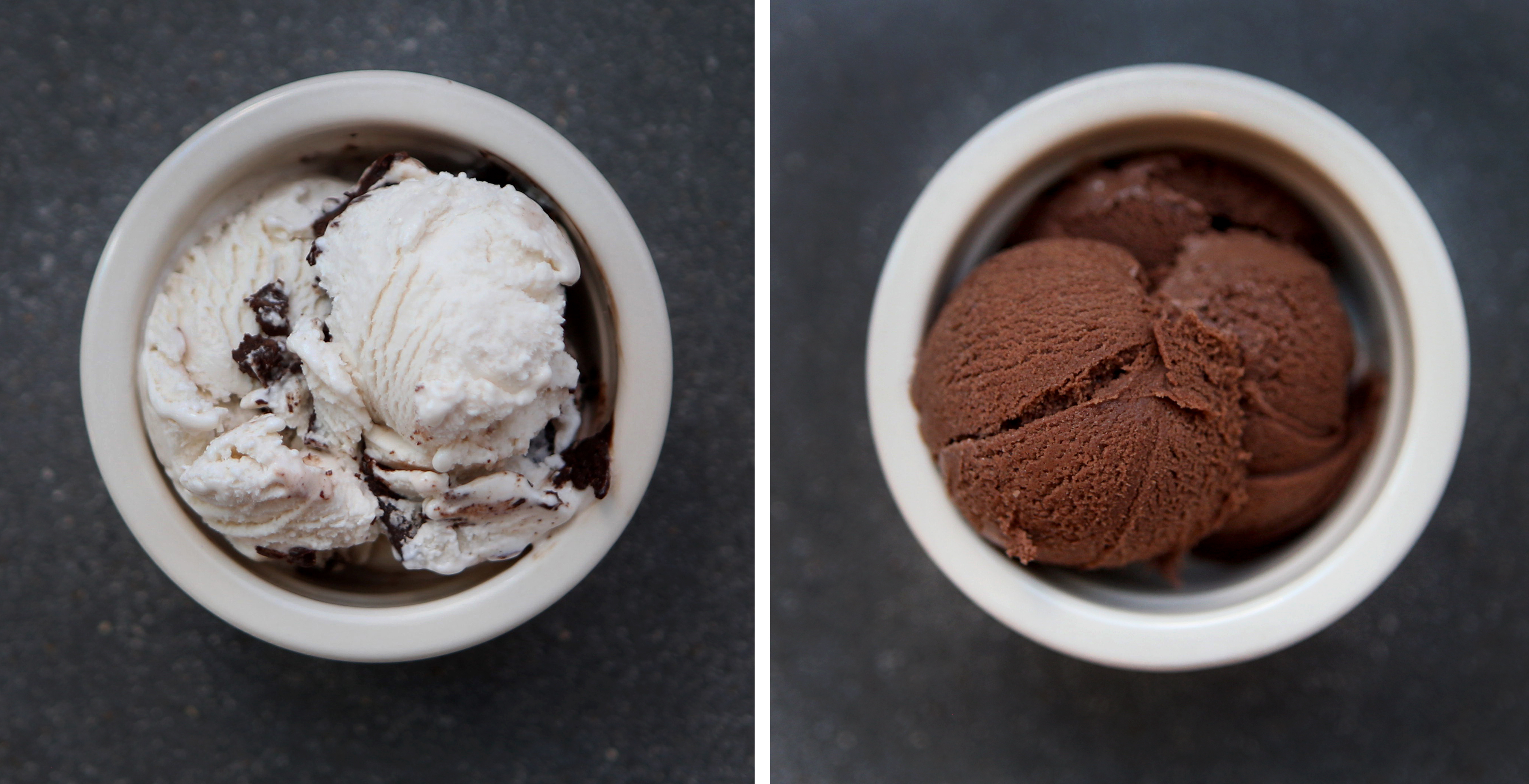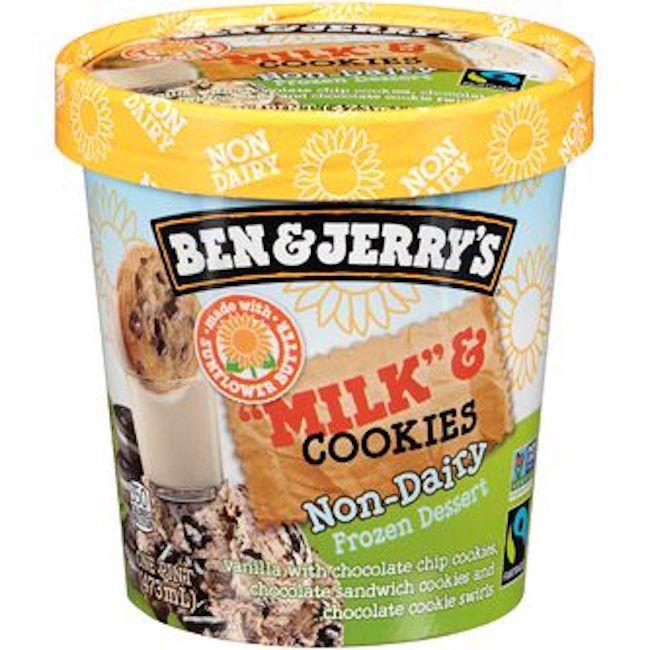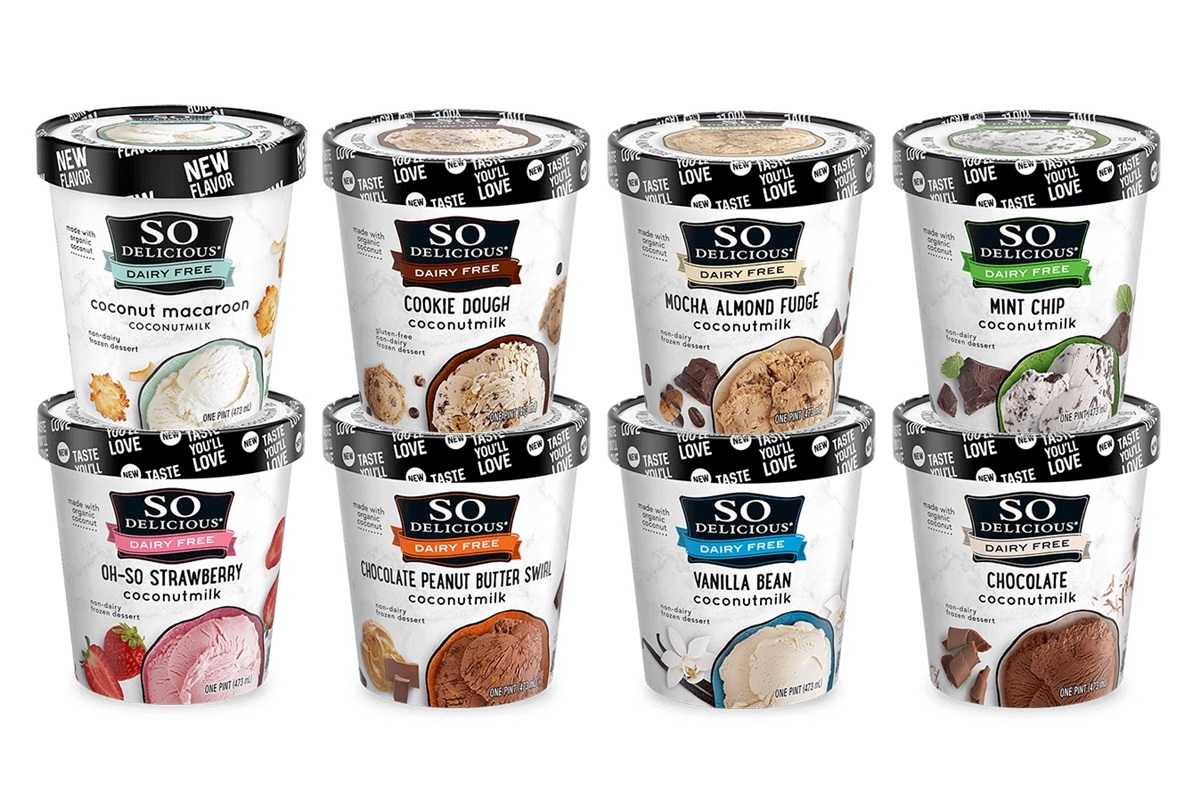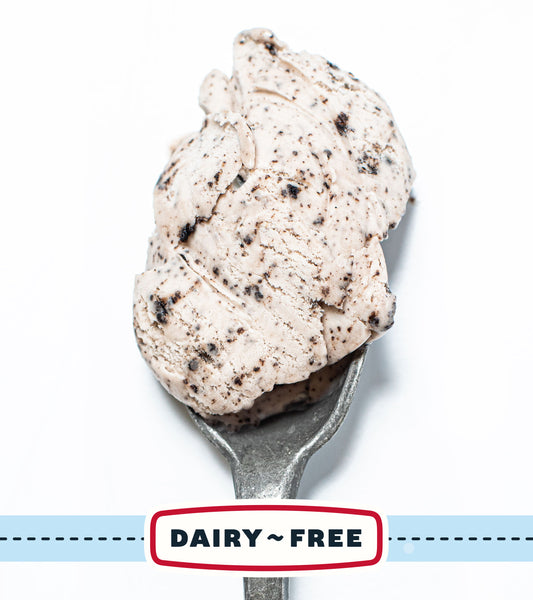Introduction

Ice cream is a beloved frozen dessert enjoyed by people of all ages around the world. One common question that arises when talking about ice cream is whether it is considered a dairy product. To understand the dairy content in ice cream, it is important to explore its ingredients and production process. While traditional ice cream is made with dairy milk as the primary ingredient, there are also non-dairy alternatives available for those with dietary restrictions or preferences. This article will delve into the dairy content in ice cream and provide insight into both dairy-based and non-dairy ice cream options.
Understanding The Dairy Content In Ice Cream
The dairy content in ice cream refers to the presence of milk and other dairy ingredients in the product. Traditional ice cream is made with dairy milk as its primary ingredient, which contributes to its creamy texture and rich flavor. It is important to note that the dairy content can vary depending on the specific product and brand. Additionally, there are non-dairy alternatives available for those with dietary restrictions or preferences. When choosing ice cream, it is important to consider the dairy content and opt for options that align with individual dietary needs and preferences.
What Makes Ice Cream Dairy?
Ice cream is considered dairy because it primarily consists of dairy milk as its main ingredient. Milk provides the creamy texture and richness that ice cream is known for. In addition to milk, other dairy components such as cream, butterfat, and sometimes eggs are also commonly used in ice cream recipes. These ingredients contribute to the smooth and indulgent qualities of ice cream. However, it is important to note that the dairy content can vary depending on the specific product and brand. It is always recommended to check the label for any potential allergens or dietary restrictions.
Milk As The Primary Ingredient In Ice Cream

Milk is the essential component of ice cream, serving as the primary ingredient that gives it its rich and creamy texture. The high fat content in milk, specifically the milkfat, is responsible for the smoothness and indulgence that ice cream is known for. The USDA requires ice cream to contain a minimum of 10 percent milkfat, which can be derived from either milk or cream. The proteins and sugars present in milk also contribute to the taste and structure of ice cream, making it a delicious and satisfying treat.
Other Dairy Components In Ice Cream
In addition to milk, ice cream often contains other dairy components such as cream, which adds to its rich and creamy texture. Cream has a higher fat content compared to milk, which contributes to the indulgent experience of eating ice cream. Additionally, some ice cream recipes may include ingredients like condensed milk or evaporated milk, which further enhance the creaminess and sweetness of the dessert. These dairy components work together to create a delicious and satisfying treat that is enjoyed by many.
Non-dairy Ice Cream Alternatives
Non-Dairy Ice Cream Alternatives:
For those who avoid dairy or have dietary restrictions, there are numerous non-dairy ice cream options available. These alternatives use plant-based milk substitutes like almond, coconut, soy, and oat milk to create a creamy and flavorful frozen treat. These non-dairy ice creams come in various flavors and textures, providing a satisfying alternative to traditional dairy ice cream. Additionally, some brands offer vegan and gluten-free options to accommodate different dietary needs. Non-dairy ice cream has gained popularity and is enjoyed by individuals looking for a delicious and dairy-free dessert option.
Non-dairy Ice Cream Options Available

There is a wide range of non-dairy ice cream options available for those who prefer or need to avoid dairy. These alternatives use plant-based milk substitutes such as almond, coconut, soy, and oat milk to create a creamy and flavorful frozen treat. They come in various flavors and textures, providing a satisfying alternative to traditional dairy ice cream. In addition, some brands offer vegan and gluten-free options to accommodate different dietary needs. Non-dairy ice cream has become increasingly popular, offering a delicious and dairy-free dessert option for everyone to enjoy.
Ingredients Commonly Used In Non-dairy Ice Cream
Non-dairy ice cream alternatives often use a variety of plant-based ingredients to create a creamy and flavorful texture. Some common ingredients used in non-dairy ice cream include almond milk, coconut milk, soy milk, and oat milk as the base. These milk substitutes provide a creamy consistency and can be combined with natural sweeteners like agave syrup or maple syrup. Non-dairy ice cream may also include other flavorings such as cocoa powder, fruit purees, vanilla extract, or spices. Some brands may add thickeners like tapioca starch or carrageenan to enhance the texture. These ingredients help create a delicious and dairy-free ice cream option that caters to various dietary preferences.
Common Dairy-free Ice Cream Options
When it comes to common dairy-free ice cream options, there is a wide variety to choose from. Some popular choices include soy-based ice cream and almond milk-based ice cream. Soy-based ice cream is made from soy milk and offers a creamy texture and delicious flavors. Almond milk-based ice cream, on the other hand, is made from almond milk and provides a nutty and rich taste. These dairy-free alternatives are widely available in many grocery stores and come in various flavors to suit different preferences. They are a great option for those who are lactose intolerant or following a vegan diet.
Soy-based Ice Cream

Soy-based ice cream is a popular dairy-free alternative that is made from soy milk. It offers a creamy texture and delicious flavors, making it a satisfying option for those who cannot consume dairy. Soy milk, with its higher fat content, helps to create a rich and smooth consistency in the ice cream. Additionally, soy-based ice cream is often higher in protein and fat, providing a more nutritious choice. It is widely available in many grocery stores and comes in a variety of flavors to suit different preferences. Soy-based ice cream is a great option for individuals with lactose intolerance or those following a vegan diet.
Almond Milk-based Ice Cream
Almond milk-based ice cream is a popular dairy-free alternative that offers a creamy and delicious option for those who cannot consume dairy. Made from almond milk, this non-dairy ice cream provides a smooth and velvety texture, similar to traditional ice cream. Almond milk is naturally sweet and provides a nutty flavor that pairs well with various ice cream flavors. It is also lower in calories and fat compared to dairy-based ice cream, making it a healthier choice for some individuals. Almond milk-based ice cream is widely available in grocery stores and comes in a variety of flavors to satisfy different preferences.
Dairy-based Ice Cream Varieties
Traditional dairy-based ice cream comes in a variety of flavors, catering to different taste preferences. Some popular flavors include vanilla, chocolate, strawberry, mint chocolate chip, and cookies and cream. Dairy-based ice cream is typically made with cow’s milk, which provides a rich and creamy texture. However, there are also alternatives like goat’s milk or sheep’s milk-based ice cream available for those with sensitivities to cow’s milk. Additionally, dairy-based ice cream can vary in milk fat content, with options ranging from low-fat to full-fat varieties.
Traditional Dairy Ice Cream Flavors

Traditional dairy ice cream comes in a variety of flavors, catering to different taste preferences. Some popular flavors include vanilla, chocolate, strawberry, mint chocolate chip, and cookies and cream. These classic flavors have been enjoyed by ice cream lovers for generations. The creamy texture and rich taste of dairy-based ice cream provide a satisfying and indulgent treat. The use of cow’s milk as the base ingredient in traditional ice cream ensures a smooth and creamy texture, allowing the flavors to shine through. Whether it’s a simple scoop of vanilla or a decadent chocolate indulgence, traditional dairy ice cream flavors are a timeless delight.
Different Milk Fat Percentages In Ice Cream
Ice cream comes in different milk fat percentages, which refers to the amount of fat from the dairy content in the ice cream. The fat percentage can vary depending on the type of ice cream. For example, traditional ice cream typically contains around 10-18% milk fat, giving it a rich and creamy texture. On the other hand, lower-fat options, such as light or reduced-fat ice cream, typically have around 3-5% milk fat. While low-fat and non-fat ice cream options contain even lower or no milk fat at all. The milk fat percentage affects the flavor and mouthfeel of the ice cream, with higher fat percentages delivering a more indulgent and satisfying taste.
Conclusion
In conclusion, ice cream can be considered a dairy product due to its primary ingredient of milk. However, there are also non-dairy ice cream options available for those who are lactose intolerant or follow a vegan diet. Non-dairy ice cream is typically made from alternatives such as soy milk or almond milk. When choosing ice cream, it’s important to consider your dietary needs and preferences. Whether you opt for a traditional dairy-based ice cream or a non-dairy alternative, there is a wide range of flavors and milk fat percentages to suit everyone’s taste. Enjoy your frozen treat! [27][28]
Summary Of Ice Cream’s Dairy Content

Ice cream is generally considered a dairy product due to its primary ingredient of milk. The milkfat in ice cream gives it its smooth and creamy texture. According to USDA regulations, ice cream must contain at least 10% milkfat. However, there are also non-dairy ice cream alternatives available for those who are lactose intolerant or follow a vegan diet. These options are typically made from alternatives such as soy milk or almond milk. When choosing ice cream, it’s important to consider your dietary needs and preferences, whether you opt for a traditional dairy-based ice cream or a non-dairy alternative. Enjoy your frozen treat! [29][30]
Considering Dietary Needs And Preferences When Choosing Ice Cream
When it comes to choosing ice cream, it is essential to consider your dietary needs and preferences. For individuals who are lactose intolerant or follow a vegan diet, non-dairy ice cream options such as soy-based or almond milk-based ice cream can be a great choice. These alternatives provide a creamy texture and delicious flavors without the use of dairy products. On the other hand, if you enjoy the traditional dairy-based ice cream, you can select from various milk fat percentages to suit your taste and dietary requirements. By considering your preferences and needs, you can indulge in a satisfying frozen treat that aligns with your dietary choices.
FAQ: Is Ice Cream Dairy?
Q: Is ice cream considered a dairy product?
A: Yes, ice cream is indeed considered a dairy product as it is primarily made from dairy ingredients.
Q: What are the main ingredients of ice cream?
A: Ice cream is typically made with milk, cream, sugar, and sometimes eggs. These dairy ingredients form the base of the ice cream.
Q: Is there any non-dairy ice cream available?
A: Yes, there are now several non-dairy alternatives to traditional ice cream that are made without milk or cream. These alternatives often use plant-based ingredients such as almond milk, coconut milk, or soy milk.
Q: Can people who are lactose intolerant eat ice cream?
A: Individuals with lactose intolerance may experience discomfort when consuming traditional dairy-based ice cream due to the lactose found in milk and cream. However, they may opt for lactose-free or non-dairy alternatives.
Q: What about people with milk allergies? Can they have ice cream?
A: Individuals with milk allergies cannot consume traditional dairy-based ice cream as it can trigger severe allergic reactions. They should choose non-dairy alternatives that are free from milk proteins.
Q: How can I tell if an ice cream is dairy-free?
A: When purchasing ice cream, always check the ingredients list and look for milk, cream, butterfat, or any other dairy-related terms. If the ice cream is made from plant-based ingredients like almond, coconut, or soy milk, it is likely to be dairy-free.
Q: Are sherbets and sorbets considered dairy-free options?
A: Yes, sherbets and sorbets are frozen desserts that are typically made without milk or cream. They are often fruit-based and do not contain dairy ingredients, making them suitable for those who cannot consume dairy products.
Q: What are some popular dairy-free ice cream flavors available?
A: There is a wide variety of dairy-free ice cream flavors available on the market today. Some popular options include chocolate, vanilla, mint chocolate chip, coffee, strawberry, and caramel, all made with non-dairy ingredients.
Q: Can dairy-free ice cream taste as good as traditional ice cream?
A: Dairy-free ice cream has come a long way in terms of taste and texture. Many brands now offer delicious and creamy alternatives that can rival the taste of traditional dairy ice cream.
Q: Is there a significant difference in nutritional value between dairy and non-dairy ice cream?
A: Dairy and non-dairy ice cream can differ in nutritional composition. Traditional dairy ice cream tends to be higher in calories, fat, and protein due to the milk and cream content. Non-dairy alternatives may have fewer calories and less saturated fat, depending on the ingredients used.
In conclusion, while ice cream is typically made with dairy ingredients, there are now many wonderful non-dairy options available for those who cannot or choose not to consume dairy products. Whether you prefer traditional or dairy-free, there is an ice cream option out there to satisfy your cravings!

Soo Good Snack Bar is an upscale snack shop located at 1309 Hermosa Ave. in Hermosa Beach, CA. This family-owned business is the newest addition to the community of Hermosa, and our goal is to create a fun and inviting place where families can enjoy delicious snack foods that fit the beach lifestyle. Check us out today and help yourself to happiness.
